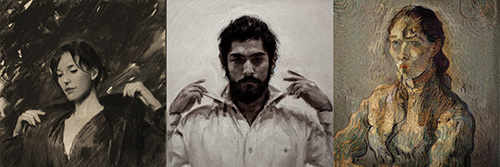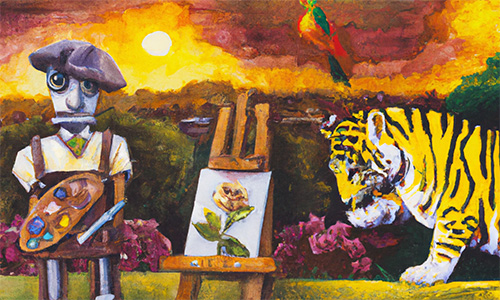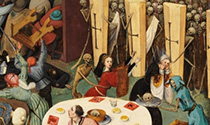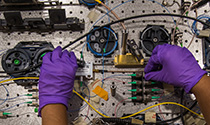|
|
|
|
| |
Smarter than your average robot |
|
| |
|
|
|
| |
ChatGPT is a new technology that has people on edge. It’s an AI chatbot that can mimic human conversation so well that you might mistake it for a real person. Some folks fear that this could lead to all sorts of problems, like the spread of misinformation online. For example, someone could use ChatGPT to create fake social media accounts that appear to be run by real people. These accounts could then be used to share false information or influence public opinion. |
|
| |
|
|
|
|
|
|
|
|
|
| |
| |
|
|
| |
Image: Three portraits, two women on either side of one man. Original art (left), plagiarized art created by an AI model (center), and the AI-generated image after cloaking the original art (right). (Courtesy SAND Lab/Art by Karla Ortiz) |
|
| |
|
|
|
|
| |
|
|
|
| |
ChatGPT is all the rage right now, but AI-powered generative art platforms that create images based on text descriptions, such as DALL-E, Midjourney, and Stable Diffusion, have been around awhile. (Google’s DeepDream was released in 2015.) One of the most troubling aspects of such platforms, which are constantly improving, is their ability to imitate the style of human artists. |
|
| |
|
|
|
| |
UChicago computer scientists have built a tool called Glaze that “cloaks” images so that AI models incorrectly learn the unique features that define an artist’s style, thwarting efforts to generate artificial plagiarisms. |
|
| |
|
|
|
|
|
|
|
|
|
|
|
| |
|
|
|
| Faced with UChicago’s “uncommon essay” College admissions prompts, ChatGPT fell short on creativity. |
|
|
|
| |
|
|
|
|
|
| |
|
|
|
| A Chicago Booth class, designed to help students deploy AI tools in business, put bot-generated recipes to the (taste) test. |
|
|
|
| |
|
|
|
|
|
| |
|
|
|
| Neural network art raises concerns about credit. |
|
|
|
| |
|
|
|
|
|
|
|
|
|
| |
| |
|
|
| |
Image: A watercolor painting–styled image of a beret-wearing robot holding a paint palette and observing a tiger cleaning its paw. A painting of a yellow flower is displayed on an easel. (Generated by DALL-E 2) |
|
| |
|
|
|
|
| |
|
|
|
| |
By now you’ve probably noticed that some of this newsletter was written by ChatGPT. But could you tell which parts? |
|
| |
|
|
|
| |
As an experiment, I fed the bot past issues to learn my voice. With no editing (to my great discomfort), ChatGPT wrote the subject line “Robo-revolution,” the headlines “Smarter than your average robot” and “From silicon to synapse,” and the entire intro. |
|
| |
|
|
|
| |
Even after several rounds of guidance, however, the writing still felt off. And try as I might, I couldn’t get ChatGPT to correctly report how often scientists spotted bot-generated abstracts. ChatGPT’s punnery also needs work: I would have written “Smarter than your average bot” to better play on “bear.” Its headline suggestion for the Glaze story was “AI Can’t Fool Me-sterpiece.” Hilarious, yet unusable. |
|
| |
|
|
|
| |
As a writer, I’m not yet worried AI will take over my job, but it’s exceptionally useful for brainstorming—or, as ChatGPT calls it, “brain-rain-dancing.” |
|
| |
|
|
|
|
|
|
|
|
|
|
|
|
|
| |
| |
Visit the Alumni & Friends website for stories, podcasts, and other features, curated for you on UChicago Review. Create an account for a more personalized experience. |
|
|
|
| |
|
|
|
|
| |
| |
Sign up to receive µChicago monthly. |
|
|
|
| |
|
|
|
|





